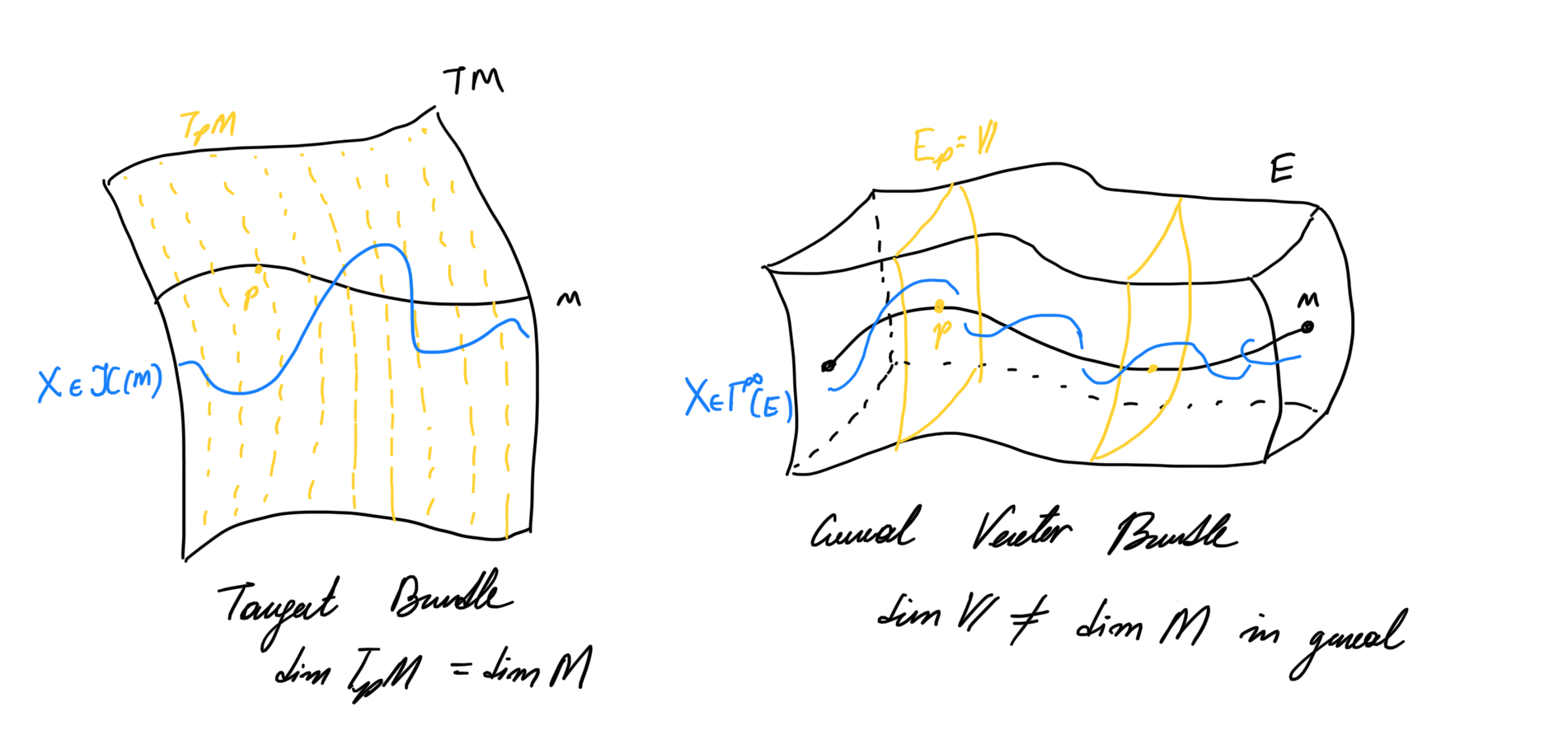Vector Valued Forms
Some notes so that I don’t forget the derivation of vector valued forms. They are used in the dissipation current formalism.
Motivation
Given a smooth manifold

As a result one can use forms on vector bundles to deal with much more general smooth structures on manifolds.
Vector Bundles
Let’s start this by defining a vector bindle.
Definition: A vector bundle

where
In principle we can define any structure over
Definition: We denote the set of smooth sections of
Yeah duh! The other thing we can do to add elements of the geometry over Tangent Bundles in this case is to define canonical notions of the following vector bundle combinations of the vector bundles
These have a conanonical structure of a vector bundle that I am trusting to not figure out myself.
The actual interesting thing is to incorporate the fact that the fiber of
Definition: A bundle metric
where the map is symmetric, linear, and nondegenerate. Notice that we don’t impose positive difiniteness.
Vector Valued Forms
Here we will copy paste the form structure from the manifold on the vector bundle with the stupidest way.
Definition: A vector valued
where
This is a cool thing, but now we wanna examine some of the properties of constructing